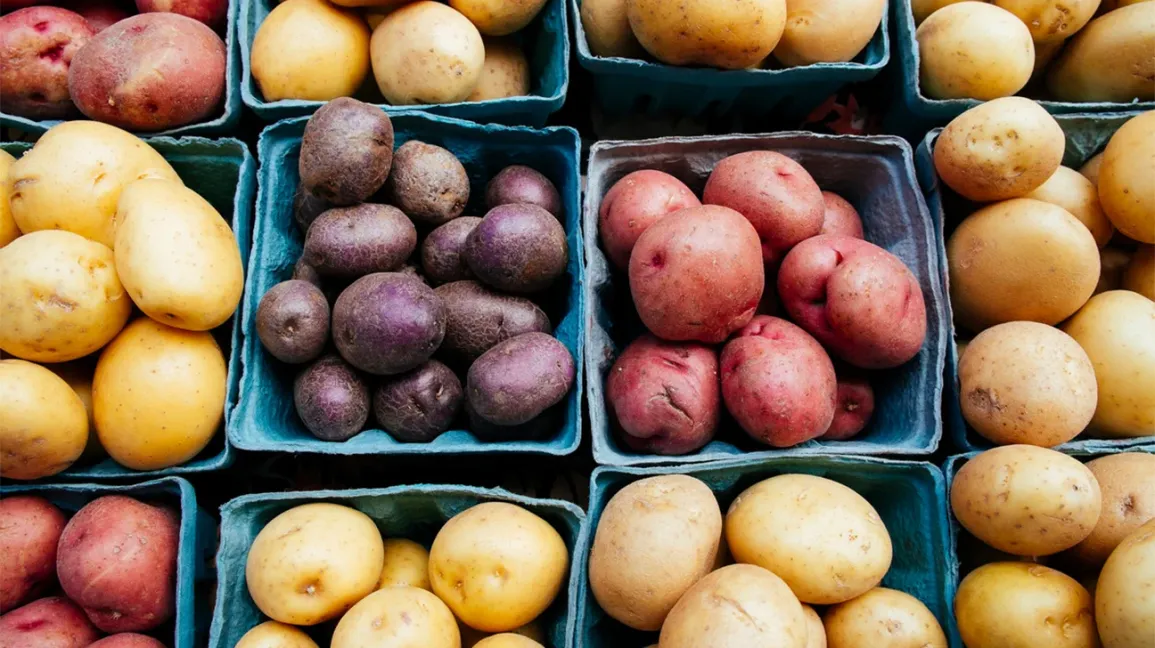Potatoes have become a staple of many diets in the world. They are versatile, nutritious, and provide comfort. People with diabetes must manage their carbohydrate levels to keep healthy blood sugar. The glycemic index (GI) measures how quickly a meal raises blood glucose levels and is an important tool in managing carbohydrates. Understanding the glycemic indices of potatoes can help individuals make better choices in managing their blood sugar levels.
In this post, we’ll explore potatoes’ glycemic indices, examine how they can affect diabetics, and give you some practical advice on how to add potatoes to your diabetes-friendly meal plan.
The Glycemic Index Of Potatoes
Carbohydrate-rich potatoes can have a GI that varies according to how the potato is prepared or served. Potatoes have greater glycemic indices than many other veggies, meaning they can increase blood sugar levels faster. Potatoes’ GI can vary depending on several factors.
Here are some common potato varieties and their respective glycemic values:
- Russet Potatoes: These starchy russet potatoes, often used in baking or mashing, have a high GI (around 85). This means the food is quickly digested, which can also cause a quick rise in blood sugar levels.
- Sweet Potatoes: Although sweet potatoes can be considered a healthier option than other foods, their GI is still moderate, ranging from 44 to 94, depending on how they’re prepared. Roasting or cooking sweet potatoes will increase their GI. However, boiling them is a good way to maintain it.
- Red Potatoes: Reds are used more often in salads than russets. Their medium GI, around 60-65, is better for those with diabetes.
- New Potatoes: New Potatoes (small, waxy) have a lower 58 GI because they are higher in fiber and more slowly digested than starchy, large potatoes.
Potatoes tend to have higher glycemic levels, but the way they’re cooked and eaten can affect their impact on blood glucose.
How Does Cooking Affect The Glycemic Index Of Potatoes?
The way potatoes are prepared, cooked, and served has a big impact on their glycemic index. Compared to mashing or baking potatoes, boiling them has much lower glycemic indexes. This is because cooking methods such as mashing or baking potatoes break down the starches, causing them to be digested quicker.
This is how different cooking styles affect the GI level of potatoes.
- Boiling Potatoes: Boiling potatoes results in a medium GI. Red potatoes or potatoes are a good example. They have a GI of around 56-60. This slower digestion prevents blood sugar spikes.
- Baking: The starch breaks down more quickly when baked potatoes, particularly at high heat. This leads to a higher GI. Baked russet potato, for instance, has a high GI of 85.
- Mashing: Mashed potatoes, especially with cream, butter, or milk, can further increase their Glycemic Index (GI), as they digest more easily than whole-boiled potatoes.
Consider boiling potatoes before consuming them. Pairing potatoes with low-GI foods, like beans or leafy greens, slows the digestive process and reduces blood sugar levels.
Potatoes And Diabetes: How To Include Them In Your Diet
Suppose you prepare them correctly, even though potatoes have a high carbohydrate content. In that case, they can still fit into a healthy meal plan for diabetes. Here are some helpful tips for managing your potatoes and diabetes consumption:
- You Can Opt For Smaller Portions
Portion management is essential to incorporating potatoes into a diabetes-friendly diet. A small to medium-sized potato (about 15 grams) can be included in a balanced meal without experiencing significant blood sugar spikes. Aim to eat only one portion per meal and avoid large portions, such as mashed or roasted potatoes.
- Choose Low-GI Or Medium-GI Potatoes
Sweet potatoes and new or red potatoes are picked with lower GI. These varieties are more tolerant of blood sugar levels than russets.
Conclusion
The glycemic level of potatoes has a significant impact on diabetes management. Potatoes are nutritious and satisfying when eaten in moderation. Understanding how cooking can affect the glycemic indices of potatoes helps people with diabetes choose how to use this delicious food.
You can make potatoes part of a balanced diet by selecting lower-GI varieties of potatoes, controlling your portion size, and pairing them with fiber, protein, and other nutrients. Suppose you enjoy boiled or baked potatoes and roasted or grilled potatoes. In that case, you can manage your diabetes by choosing the right preparation.
Keep an eye for more latest news & updates on Next Home!
